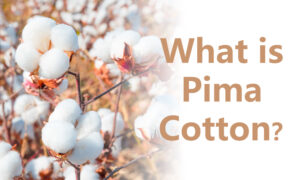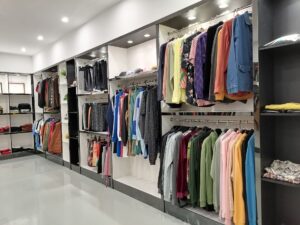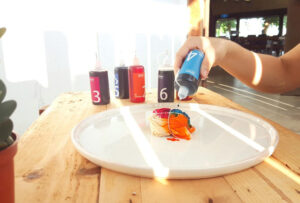What Are Popular Colors?
Definition of Popular Colors
Popular colors refer to shades and hues that gain significant attention and usage within the fashion and design industry during a specific period. These colors influence not just clothing but also home décor, art, and more. Popular colors reflect social moods, cultural trends, and consumer needs. Staying attuned to color trends is crucial for clothing manufacturers, brands, and designers to maintain a competitive edge in the market.
Sources of Color Trends
Color trends are shaped by a variety of factors, such as fashion week shows, cultural phenomena, and trending topics on social media. Seasonal changes also play a major role. Global organizations like the Pantone Color Institute release annual color forecasts, serving as a guide for industry professionals to adopt relevant hues.
Color Psychology
Colors and Emotions
Each color can evoke specific emotional responses. Red represents passion and energy, making it suitable for vibrant and enthusiastic product lines. Blue symbolizes calmness and trust, ideal for professional and stable-looking clothing lines. Green conveys natural and eco-friendly vibes. Understanding how colors impact emotions and behaviors is key for creating designs that resonate with customers.
Color Preferences of Target Markets
Different regions, cultures, and age groups exhibit varying color preferences. For example, younger audiences often favor bright and bold colors, while older customers lean toward neutral and muted shades. Designers must clearly identify their target customers when choosing colors to enhance product appeal and acceptance in the market.
Popular Colors and Seasonality
Color Changes Across Seasons
Spring and summer tend to feature bright and light colors, such as soft pinks and vibrant yellows. Conversely, fall and winter focus on deeper and warmer tones like burgundy and deep navy. Understanding these seasonal color characteristics helps create products that better meet consumer needs and attract attention.
Special Occasion Colors
Certain holidays and festivals come with specific color themes. For example, red is symbolic of prosperity and good luck during Chinese New Year, while green and gold often mark Christmas celebrations. Integrating these colors into designs can effectively capture holiday market demand.
Color Use in Clothing Design
Color Matching Techniques
Color combinations play a crucial role in clothing design. Common techniques include complementary colors (e.g., red and green), analogous colors (e.g., blue and purple), and contrasting colors. By leveraging these techniques, designers can enhance visual appeal and reflect a unique brand identity.
Case Studies
Analyzing successful case studies of popular color application can provide valuable inspiration. For example, a brand might create a fall-winter line using earth tones, which resonates well with market trends, leading to substantial consumer interest and increased sales.
Gathering and Analyzing Popular Colors
Sources of Color Inspiration
Designers can find color inspiration through various channels, including attending fashion exhibitions, following top fashion bloggers, and exploring social media platforms like Pinterest. Additionally, cross-industry collaborations can spark unique and innovative color ideas.
Trend Analysis and Prediction
Market data and consumer behavior analysis are essential for predicting future color trends. By studying customer feedback, industry reports, and market dynamics, designers can better anticipate the next season’s popular colors and position their brands advantageously.
Sustainability and Social Responsibility
Impact of Environmental Awareness
With the rising focus on environmental sustainability, brands increasingly incorporate eco-friendly practices into their color choices. For example, the use of natural and biodegradable dyes not only aligns with color trends but also enhances brand image.
Color and Brand Storytelling
Brands can communicate their values and social responsibility through specific colors. For instance, using green or blue to signify environmental commitment helps attract eco-conscious consumers.
Practical Recommendations
Color Strategies for Product Launches
Selecting the right popular colors for new product launches can significantly boost market appeal. Brands should consider seasonal color trends and target market preferences for precise marketing efforts.
Inventory and Sales Strategies
Effectively adjusting inventory and sales strategies based on color trends can optimize stock levels and boost sales. Maintaining efficient communication with supply chains allows for agile responses to market demand shifts.
Conclusion
Future Outlook
The role of popular colors in clothing design will continue to evolve. Brands that closely follow market trends and drive innovation have a greater chance of standing out in the competitive landscape. Clients are encouraged to explore and experiment with new color combinations to create trendsetting products.







